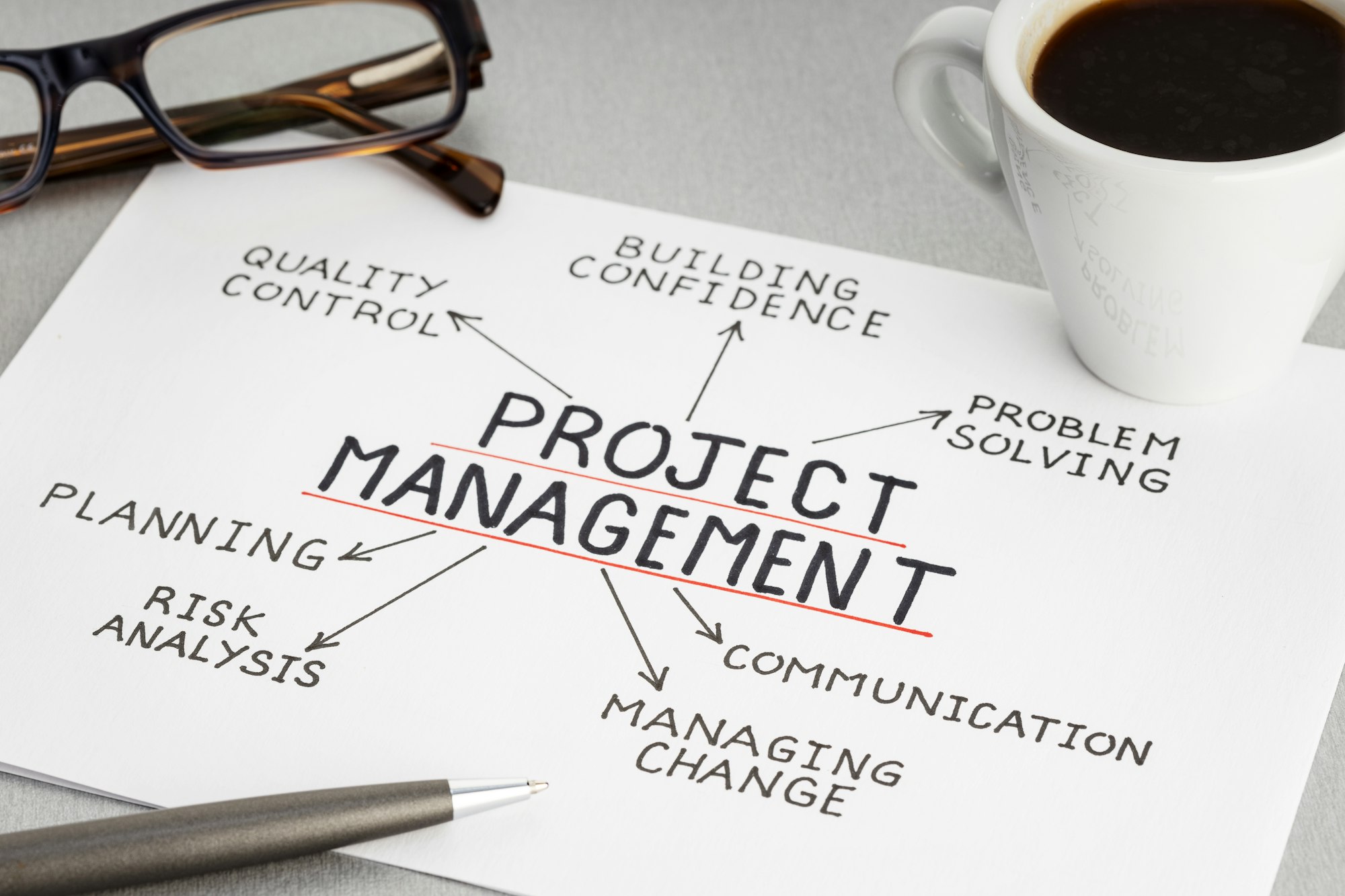
Estimating costs accurately is vital for the success of any small business. Without a solid understanding of your expenses, it’s challenging to make informed financial decisions, plan for growth, or avoid overspending.
Whether you’re launching a startup or managing an established company, mastering cost estimation can be a game-changer.
Imagine having a clear picture of your financial future, where every expense is accounted for, and surprises are minimized. It might sound like a dream, but it’s entirely possible with the right techniques.
Curious to know how? Let’s dive into the top cost estimation techniques that can help you plan your finances with confidence.
“Good fortune is what happens when opportunity meets with planning.” – Thomas Edison
Understanding the financial aspects of your business is crucial to its success. Cost estimation plays a significant role in planning and budgeting, helping you make informed decisions that impact the bottom line.
Several techniques can be employed to estimate costs effectively, each with its unique strengths and applications.

This approach involves breaking the project down into smaller components or tasks and estimating the cost of each individually. Once all task costs are determined, they are summed up to get the total project cost. This technique can be highly accurate but may be time-consuming and require detailed knowledge of the project.
Also known as top-down estimating, this method leverages historical data from similar past projects to provide cost estimates. It’s a quicker and less resource-intensive approach compared to the bottom-up method, making it suitable for high-level estimates or when time constraints exist.
This technique uses statistical relationships between historical data and other variables to calculate cost estimates. For instance, you might use the cost per square foot to estimate the total cost of a building based on its size. Parametric estimating can be efficient and reasonably accurate, especially when reliable data is available.
To account for uncertainty, this method involves three estimates: the optimistic, pessimistic, and most likely cost estimates. By averaging these three values, you obtain a more balanced and realistic estimate. This method is particularly useful in projects with high variability.
By understanding and applying these techniques, small business owners can plan their projects more effectively, ensuring better financial management and strategic growth.
Estimating costs effectively can be the deciding factor between the success and failure of your small business project. Whether you’re just starting out or looking to tighten your budget, having a solid understanding of cost estimation techniques is crucial.
To begin, identify each relevant project unit. By breaking your project into smaller, more digestible components, you make it easier to estimate costs accurately.
This process, often referred to as Bottom-Up Estimating, involves estimating the cost of each individual task and then summing these estimates to get the overall project cost.

For example, if you’re planning a marketing campaign, you would estimate the costs for content creation, advertising, graphic design, and so on, before adding them up.
Next, calculate the cost of each unit. This involves researching and determining how much each unit will cost. Here, leveraging historical data can be invaluable.
By looking at past projects or industry benchmarks, you can make informed assumptions about costs. Additionally, engaging suppliers and contractors for quotes can provide real-time, accurate data.
A handy equation to keep in mind is:
Number of Work Units * Cost of a Single Unit = Total Project Cost
Using this formula, if you know you need 50 hours of graphic design work and your designer charges $50 per hour, then the total cost for graphic design would be:
50 hours * $50/hour = $2500
Beyond this, it’s important to include buffer amounts for unexpected expenses—typically 5-10% of the total project cost. This contingency is critical for covering unforeseen costs that invariably arise.
Remember, accurate cost estimation isn’t just about crunching numbers; it’s about understanding the nuances of your project and being able to predict and adapt to changes.
By employing these techniques, you will be well on your way to not only estimating costs but also managing them effectively.
Choosing the right cost estimation method can significantly impact your project’s success and overall business health. Here are some of the best cost estimation methods tailored specifically for small businesses:
Bottom-up estimating involves breaking down a project into smaller, manageable components and estimating the costs of each component individually. This method allows for detailed and accurate cost estimates since each task is evaluated separately.
Benefits:

Analogous estimating, also known as comparative estimating, uses the costs from past projects as a reference to estimate the cost of a current project. This method is less time-consuming but may not be as precise.
Benefits:
Parametric estimating involves using statistical models and historical data to estimate costs. For instance, calculating costs per unit and then multiplying by the total number of units required for the project.
Benefits:
This method uses three different estimates to calculate the final projected cost: the best-case scenario (optimistic), the most likely scenario, and the worst-case scenario (pessimistic). The final estimate is often an average of these three figures.
Benefits:
Reserve analysis involves adding contingency reserves to your original cost estimate to account for potential risks and uncertainties. This ensures that you have a buffer if unexpected expenses arise.
Benefits:
By understanding and choosing the right cost estimation methods, small businesses can better manage their budgets, minimize risks, and confidently achieve their project goals.
When it comes to estimating costs for your small business, you might find yourself weighing the options between top-down and bottom-up approaches. Both methods have their strengths and can be particularly useful depending on the specific context of your project or business needs.
Top-Down Estimation is a technique where you start with a higher-level overview of the project. Essentially, you break down the total project budget into smaller portions allocated to different aspects of the project.
This method is faster and can be incredibly useful during the initial planning phases when detailed information isn’t yet available. It provides a quick way to estimate the project’s cost based on historical data and similarity to past projects.
One of the key advantages of top-down estimation is its simplicity and speed. Since it relies on broader benchmarks and averages, it can be quickly communicated to stakeholders and is easier to adjust for high-level changes.

However, this approach can sometimes lead to inaccuracies if the initial assumptions are off or if the project scope changes significantly.
On the other hand, Bottom-Up Estimation delves into the nitty-gritty details. This method involves estimating the cost of each individual component and task that makes up the entire project.
Each of these detailed estimates is then aggregated to form the total project estimate. While this method is time-consuming, it tends to be more accurate since it considers all the granular details.
The main advantage of bottom-up estimation is its precision. By focusing on the specifics, you can identify potential cost drivers and areas where savings might be possible. This detailed approach can also help in better risk management by pinpointing critical elements early in the process.
In practice, small businesses often benefit from a hybrid approach. Starting with a top-down estimate for a rough budget can provide a quick, high-level view. Then, refining these estimates through a bottom-up approach ensures accuracy and detailed insight.
By leveraging both methods, you can create a balanced and flexible cost estimation process that adapts to both strategic vision and detailed project realities.
When it comes to leveraging historical data for accurate cost estimates, you’re essentially taking lessons from the past and applying them to your current and future projects. This approach helps you avoid the common pitfalls of underestimating costs or overcommitting resources, creating a more sustainable and feasible business plan.
The first step is to collect comprehensive data from previous projects. This involves documenting all the relevant costs, from materials and labor to incidental expenses.
The more detailed the historical data, the more accurate your future estimates will be. You can use tools like spreadsheets or specialized project management software to track these costs effectively.
Next, you’ll need to analyze this data to identify patterns and trends. Are there particular expenses that consistently exceed initial estimates? Are there seasonal variations in costs that need to be accounted for? By answering these questions, you can make informed adjustments to your cost projections.
This analysis allows you to build a cost estimation model that reflects real-world conditions rather than relying solely on theoretical calculations.
Incorporating historical data doesn’t stop at just identifying average costs. It also involves understanding the variables that influenced these costs.
For example, if a previous project’s labor costs were higher due to overtime work during peak periods, you can plan your current project timelines more efficiently to avoid such additional costs.

Moreover, historical data can help in re-estimating costs at project milestones. As your project progresses, you’ll gather real-time data and insights.
By comparing current performance metrics with historical data, you can refine your cost estimates and make necessary adjustments. This iterative approach ensures that your cost estimates remain accurate throughout the project lifecycle.
Ultimately, leveraging historical data is about using the wealth of information already at your disposal to make smarter, more accurate cost estimates. It’s a proactive strategy that not only improves your planning but also enhances your ability to deliver projects on time and within budget.
Cost estimation is both an art and a science, and even the most experienced small business owners can fall prey to certain pitfalls. By being aware of these common mistakes, you can refine your techniques and produce more accurate forecasts.
One of the frequent errors in cost estimation is neglecting indirect costs, also known as overhead. These can include utilities, office supplies, and administrative expenses. To avoid this, make sure to account for all indirect costs and allocate a portion of them to your project costs.
Every project comes with its share of uncertainties. Failing to assess and incorporate risks can lead to significant cost overruns. Utilize techniques like Reserve Analysis and Three-Point Estimating to build a risk buffer into your budget.
General cost estimates can be too vague and often miss critical details. To counter this, use Bottom-Up Estimating to break down every part of your project and estimate the costs at a granular level. This ensures you don’t miss hidden expenses.
Your own business history is full of valuable data. Ignoring past records and projects can mean missing out on insights that could make your estimates more accurate. Make it a habit to review previous estimates and outcomes to refine your technique.
Expert reviews can provide valuable insights into potential cost areas that you might overlook. However, be mindful that expert opinions can sometimes be biased. Balance expert advice with data-driven methods like Parametric Estimating.
Time is money. Underestimating the time required to complete a project can result in a cascade of extra costs. Always incorporate realistic time estimates and consider potential delays when estimating costs.
By steering clear of these common pitfalls, you can ensure a more robust and reliable cost estimation process for your small business.
Analogous estimation is a go-to method for many small businesses, especially when you’re in the early stages of a project and concrete details are scarce.
This technique relies on your ability to draw parallels between your current task and similar projects your business—or others like yours—have completed previously. Essentially, you look at past data and use it to make educated guesses about the costs and timelines for your current project.
One of the biggest advantages of analogous estimation is its speed and simplicity. Without needing deep dives into complex calculations or gathering extensive datasets, you can quickly get a rough estimate that helps in moving the project forward. This can be incredibly useful for small businesses where time and resources are often stretched thin.
However, it’s important to use analogous estimation judiciously. The accuracy of your estimates heavily relies on the relevance and accuracy of the historical data you have at hand.
If the past projects you’re using for comparison are significantly different in scope or context, your estimates can be off mark, potentially leading to cost overruns or misallocated resources.
To bolster the reliability of your analogous estimates, it’s wise to consult with experts who have experience in similar types of projects.
Their insights can provide additional context that pure historical data might miss. Also, combining analogous estimation with other techniques, like Parametric Estimating or Three-Point Estimating, can give you a more rounded and reliable cost estimate for your projects.

Utilizing the right software can significantly streamline your cost estimation process, making it both efficient and accurate. Here are some tools and tips to help you get started:
By integrating these tools and tips into your cost estimation process, you can enhance your project’s financial planning and ensure a smoother pathway to success. Whether you’re just starting out or looking to refine your current methods, the right software can make a world of difference in achieving precise and reliable cost estimates.
Using cost estimation techniques provides several essential benefits for small businesses:
Improving cost estimation accuracy involves several key strategies:
Cost estimation techniques profoundly impact the budgeting process in several ways:
Estimating costs for unexpected expenses can be challenging but is crucial for maintaining financial health:
Ensuring realistic cost estimates can be achieved through these methods:

Ensuring accurate cost estimates is a critical factor in the success of any small business. By using structured techniques such as Bottom-Up Estimating, Analogous Estimating, Parametric Estimating, Three-Point Estimating, and Reserve Analysis, you can create a more precise financial roadmap for your projects.
Remember that leveraging historical data and avoiding common pitfalls, like overestimating labor or material costs, will refine your estimates and help you stay within budget.
Utilizing expert opinions can also offer valuable insights and help avoid potential biases. Furthermore, the thoughtful use of cost estimation software can streamline your processes and enhance consistency.
Ultimately, the key is to balance quantitative analysis with qualitative insights to develop cost estimates that are both realistic and reliable. As your business grows, continuously refining your cost estimation processes will contribute significantly to your financial health and operational efficiency.



